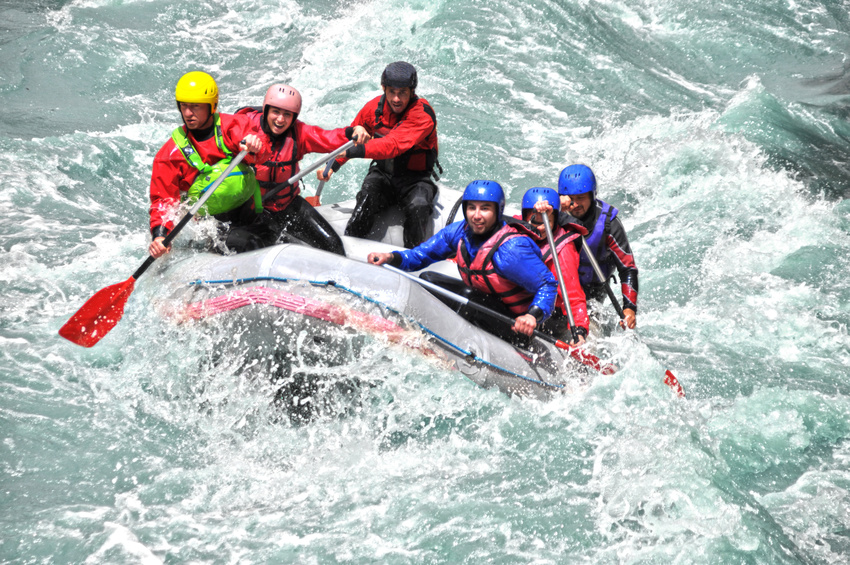Raft Trips Through Colorado’s History
 For many people, history is a major part of the travel experience. For these people, a trip to southern Pennsylvania would not be complete without a visit to Gettysburg and a trip to San Antonio would not be complete without a visit to the Alamo. What is in store for these travelers when they visit Durango and the Four Corners region? Here are a few facts about southern Colorado and its history:
For many people, history is a major part of the travel experience. For these people, a trip to southern Pennsylvania would not be complete without a visit to Gettysburg and a trip to San Antonio would not be complete without a visit to the Alamo. What is in store for these travelers when they visit Durango and the Four Corners region? Here are a few facts about southern Colorado and its history:
Many Native American Bands Inhabited the Area
The Ute people were the first inhabitants of the areas around Durango, Colorado. In fact, the Ute people inhabited lands across Colorado, Utah, Arizona, Nevada, New Mexico, Oklahoma, and Wyoming. The Utes traded with other Native American tribes in the region, including the Peubloans and Navajo, as well as the Spanish after their arrival in the area.
Today many of the Ute people live on the Southern Ute reservation and Ute Mountain Reservation. Visitors who wish to experience the culture of the Ute people can visit the Southern Ute museum in Ignacio, Colorado. To experience life the way the Ute people did, fishing, kayaking, and raft trips along the Colorado, San Miguel, and Animas Rivers will take travelers through the areas where the Ute people would make their winter camps. The Ute Mountain reservation sits adjacent to Mesa Verde National Park, which preserves early dwellings of the Puebloan people who also inhabited the area.
The Four Corners Region is Unique
The boundaries of Colorado, Arizona, New Mexico, and Utah were effectively set in 1863 when Congress separated the Arizona Territory from the New Mexico Territory with a line running due south from the corner of the Colorado Territory. This guaranteed that four states would meet at a single point, the Four Corners, when the territories were later admitted to the U.S. as states. The Four Corners Monument marks the only location in the United States where four states meet. In addition to four states, four Native American tribal nations, Navajo, Ute, Hopi, and Zuni, cover the area around the Four Corners region. In fact, the Navajo nation placed the bronze disk marking the actual four corners where the states meet in 1931 and assumed responsibility for administering the monument in the 1960s.
Durango Was Established to Support the Railroad and Mining
Durango was founded in 1880 to serve as a rail stop because of its access to water and coal. Silver and gold mines had operated in the area since 1872 and mining operations opened smelters in and around Durango because they too required easy access to water and coal. Durango, Colorado was named after Durango, Mexico by Alexander Hunt, a former governor of the Colorado Territory, because the areas resemble each other. “Durango” is derived from the Basque word “Urango” which refers to a town near water. This access to water makes tourism and recreation, such as kayak and raft trips, the largest industry in present-day Durango.
The Animas River, or River of Souls
A popular attraction for raft trips, the Animas River was named by a Spanish explorer in 1765. The Spanish name for the river is Rio de las Animas which translates to River of Souls. In a series of newspaper articles published in the 1890s and early 1900s, reporters and editors sensationalized the Animas River as the River of Lost Souls. Since then, many legends, mostly unconfirmed, have grown up around the Animas River as being haunted or cursed. Despite these ghost stories, the Animas River has become a popular spot for rafting and fly fishing trips near Durango.
The San Miguel River
Another popular river for raft trips is the San Miguel River. The San Miguel River is a tributary of the Dolores River. The Dolores River flows into the Colorado River which, at 1,450 miles long, is the only major river in the southwestern United States. The San Miguel River starts in the mountains above Telluride near a mining town called Pandora. The mines around Pandora originated during the 1870s during a gold and silver rush in the area. The mines and mill in Pandora continued to operate through World War II to contribute zinc and lead to the war effort. The mine and mill eventually closed in 1978 and Pandora is presently a ghost town.
